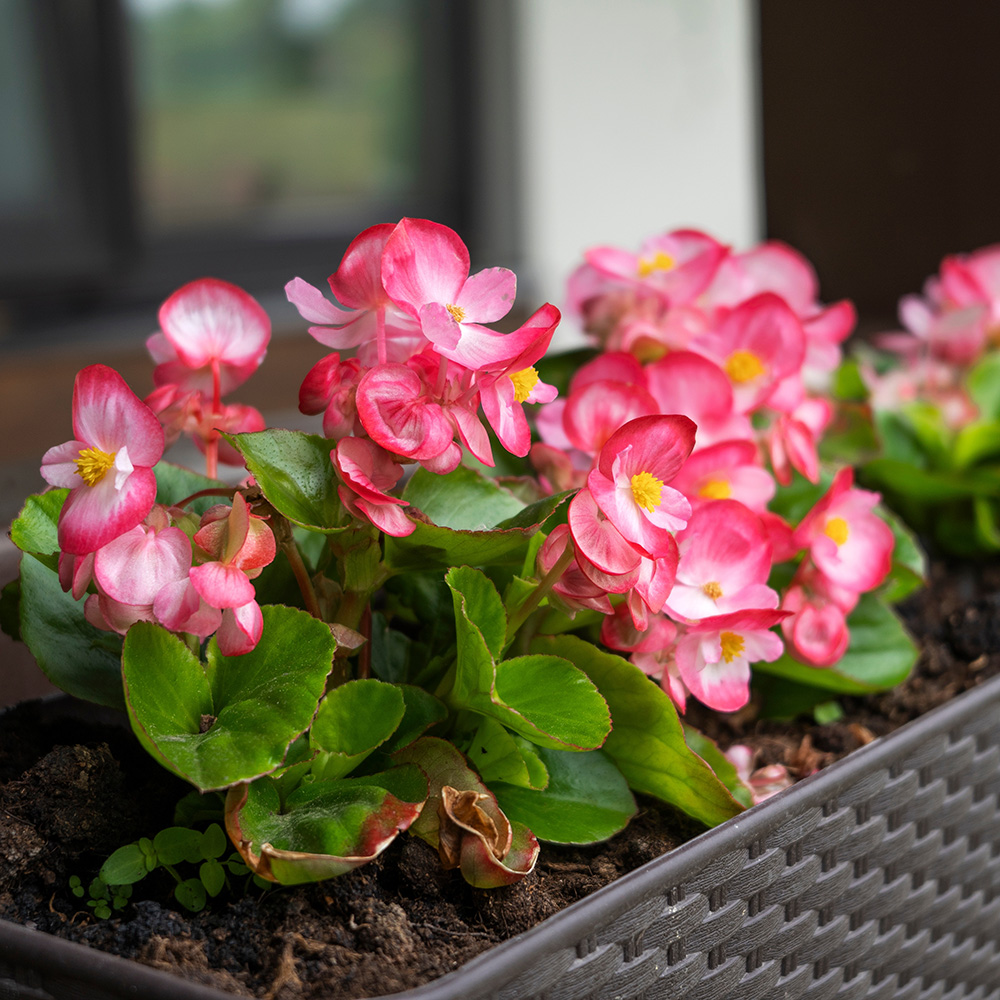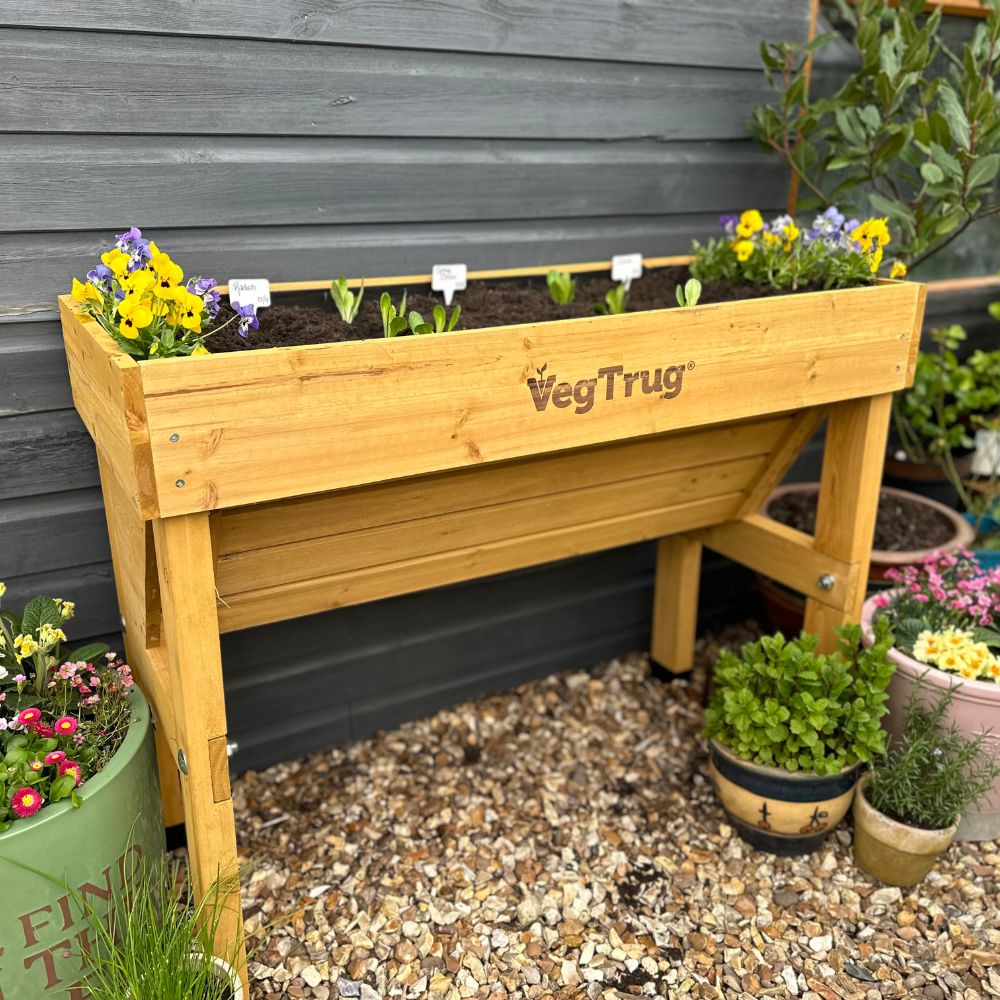Gardening for Beginners – Creating Container Gardens
Container gardens open up the world of gardening to places a suffering with limited space. You can plant most types of plants in containers, from shrubs and ornamental flowers to fully fledged trees and veg! Whether you’re a beginner or just need a refresher, find all the tools, tips and advice to start your own container garden with us at British Garden Centres.
Tools of the Trade
Starting a container garden couldn’t be simpler, simply find a fitting size pot/propagator and some ideal compost. Your container can be anything the plant can comfortably fit in – so get creative!
Multi-purpose compost from your local British Garden Centre will provide a strong base, but be sure to research your specific plants requirements beforehand. You may need ericaceous soil for acid loving plants like azaleas.
If you’re unsure on how to sow your seeds, check out our Beginners Guide to Sowing and Pricking to get started. A good practice is to plan your garden, especially with containers. Decide what gets planted where beforehand, as once a larger pot is filled with compost it might be too heavy to move!

Ideal Flowers for a Container Garden
Lilies – You can plant almost all kinds of Lilies in containers for their unbeatable blooms and delightful fragrances. Taller Lilies will need to be supported, so aim for low growing shorter varieties for less hassle. Fill your container with 2-3 inches of drainage material (small stones/fine aggregate) and fill with your chosen compost. Some Lilies may need deeper containers depending on their rooting method, you can typically find this information on the back of the seed/bulb packet.
Roses – Some Roses thrive in containers, bringing their iconic blooms to any sized garden. Patio roses and miniature dwarf varieties are perfect for pots. Roses have long, shallow roots so will need a deeper pot to establish themselves – needing a minimum of 30cm (12In). Roses will need a sunny spot and must be kept moist. They are very nutrient hungry plants and can quite quickly use up food – so keep an eye on your soil.
Clematis – A vigorous climber that can surprisingly flourish in pots too! Terracotta pots are best for Clematis, as they will provide roots with some protection in the winter and wont overheat in the summer. Good drainage is needed too as Clematis dislike pooling water, so ensure your containers drainage holes are plenty. Place these against walls or trellis and they’ll be apart of your garden for years to come.

Planting Fruit and Veg
Yes, you read that right – container grown fruit and veg! From Apple trees and berries to Carrots and Potatoes you can grow all time classics in any sized garden. Fruit trees can be planted almost anytime of year, but Veg will have to stick to the usual timings on the back of the seed packet. Trees will need a larger, stronger pot – clay pots are a good choice.
Fruit – Fruit in containers will need a sunny position as well as a thorough watering. Wait for the surface of the soil to dry before re-watering but also not completely crumbly dry. This is vital in the summer as if your fruit is de-hydrated you fruit will drop before they’re ripe. For your larger, hardy plants and trees try to re-pot every year to avoid the roots becoming pot bound and stunting their growth.
Veg – Some of the most popular container veg are Potatoes, Dwarf Lettuces and Carrots. They require deeper containers as their roots need to flourish for maximum yield. Vegetables in containers follow their usual planting methods, though if your still unsure you can check out our Beginners Guide to Growing Veg for a full breakdown.

Container Pond – A Natural Haven
A very unique use for containers, you can create your very own pond to attract plenty of wildlife. All you need is a water-tight container, some decorative pebbles/large rocks and some aquatic plants.
Place your container in a partially sunny spot, one that gets a good blend of sun and shade and is also visible for you too. Using your larger rocks or bricks, build a raised area by the edge of the container so frogs can easily hop in and out. If you have a water butt this is the perfect use for rain water, as filling your container with tap water can encourage excess algae growth. Set up your chosen pond plants – and voila!
Sit back and wait for nature to come to you, soon enough you may find some amphibious visitors in you container garden!































